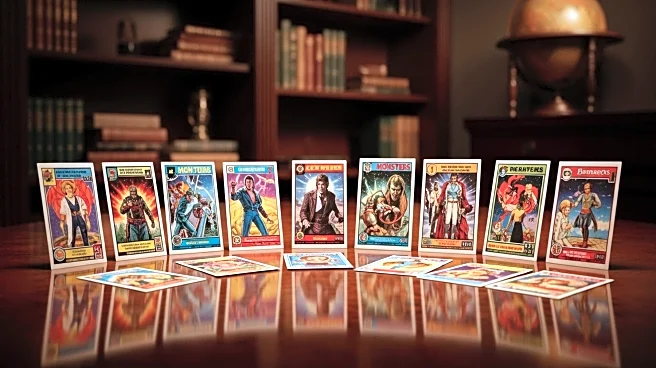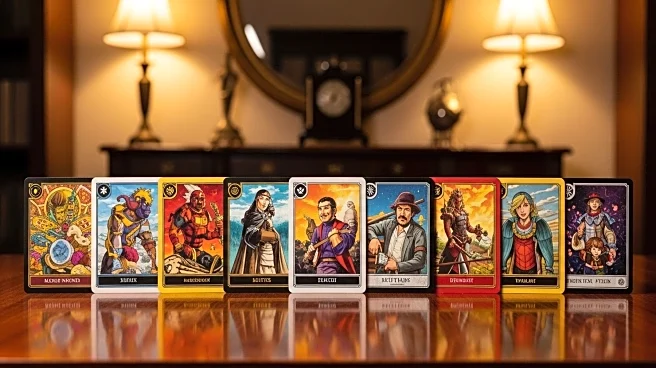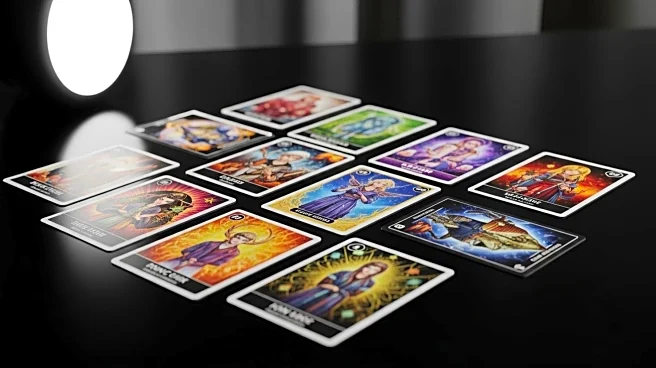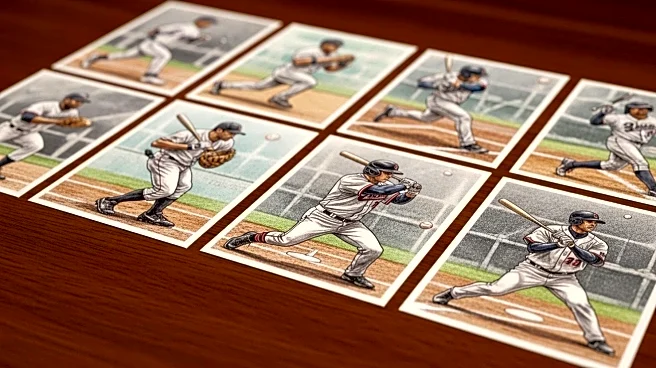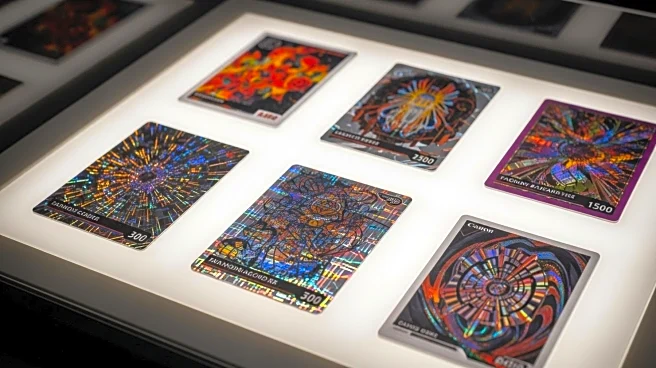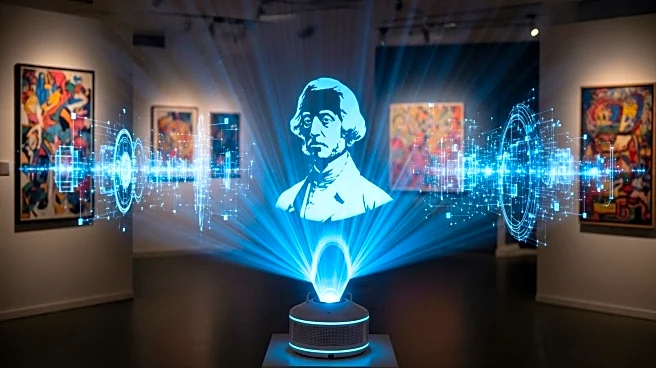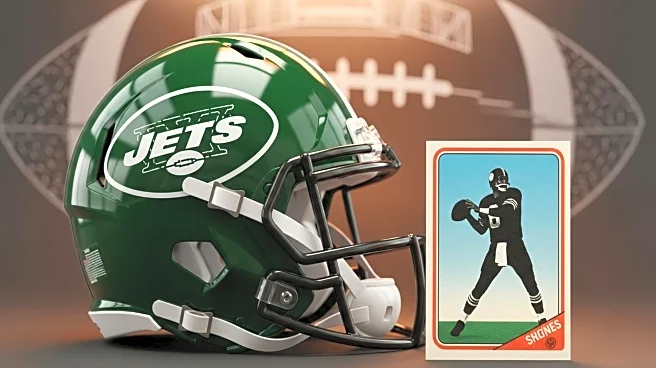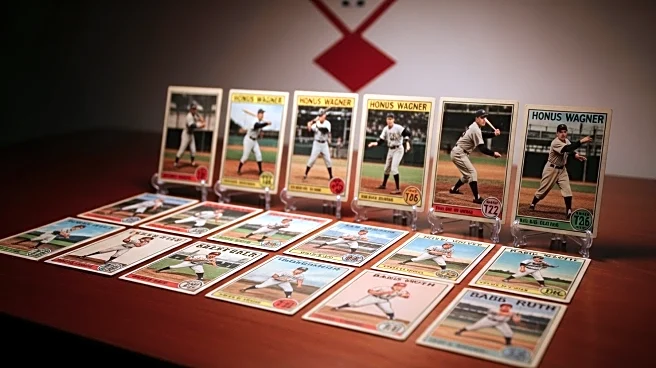What's Happening?
Topps Allen & Ginter, known for its unique non-sport inserts, has seen several of its cards achieve high auction prices. Since its modern reboot in 2006, the brand has gained a cult following for its quirky and unpredictable non-sport cards, which include celebrity cameos, historical figures, and cultural oddities. Some of the top-selling cards from the past year include a John F. Kennedy cut signature card sold for $5,185, a George W. Bush autograph card, and a Mike Tyson autograph card. These cards, often featuring pop culture icons, have become highly sought after by collectors, demonstrating the brand's ability to blend culture and history into collectible art.
Why It's Important?
The success of Topps Allen & Ginter's non-sport cards highlights the growing interest in collectibles that go beyond traditional sports memorabilia. This trend reflects a broader shift in the collectibles market, where unique and culturally significant items are increasingly valued. The high prices achieved by these cards indicate strong demand and suggest that collectors are willing to invest in items that offer a blend of historical significance and cultural appeal. This could influence the future direction of the collectibles industry, encouraging brands to explore more diverse and creative offerings.
What's Next?
As interest in non-sport collectibles continues to grow, Topps Allen & Ginter may expand its offerings to include more diverse and culturally relevant cards. This could attract new collectors and increase competition among brands seeking to capitalize on this trend. The success of these cards may also lead to collaborations with celebrities and cultural figures, further enhancing the brand's appeal. Collectors can expect more innovative and unexpected releases, potentially driving further growth in the market.
Beyond the Headlines
The popularity of non-sport cards raises questions about the evolving nature of collectibles and their role in preserving cultural history. These cards serve as a form of cultural documentation, capturing moments and figures that resonate with collectors. The trend also highlights the intersection of art and commerce, where collectibles become a medium for storytelling and cultural expression. As the market evolves, ethical considerations around authenticity and representation may become increasingly important.
